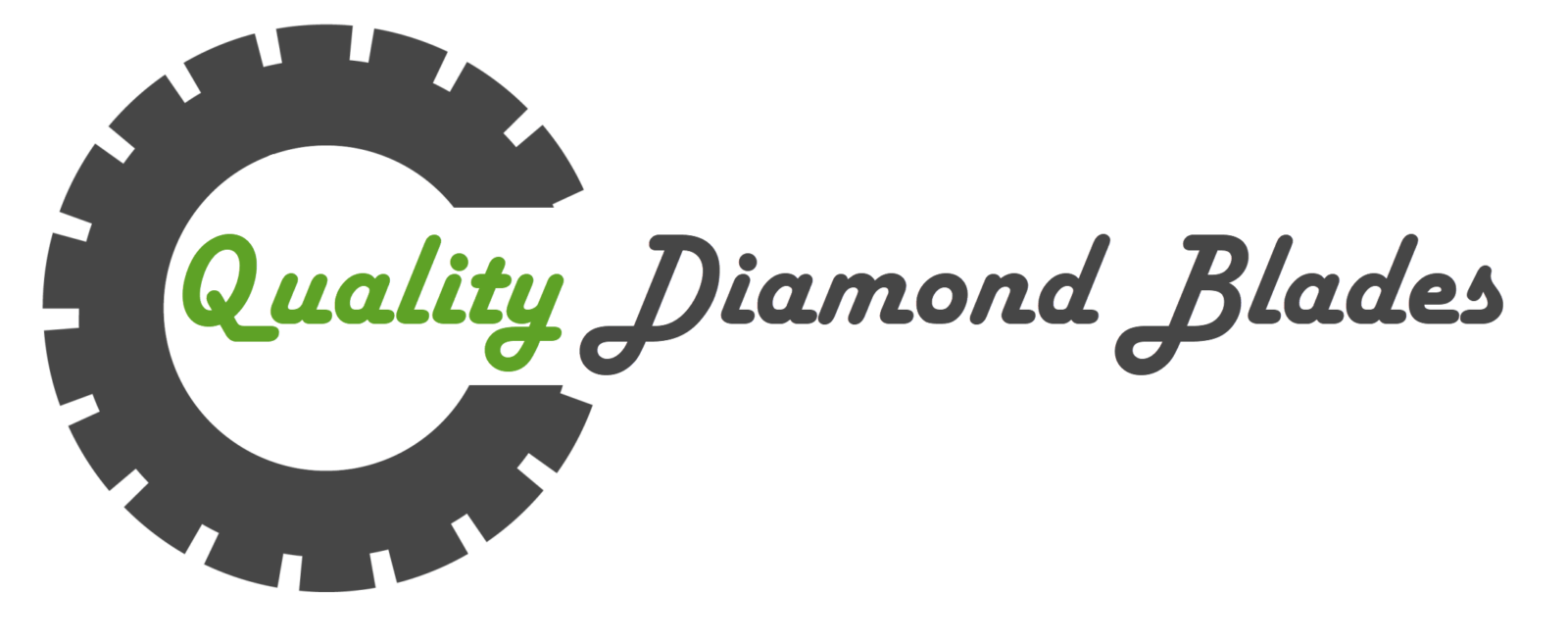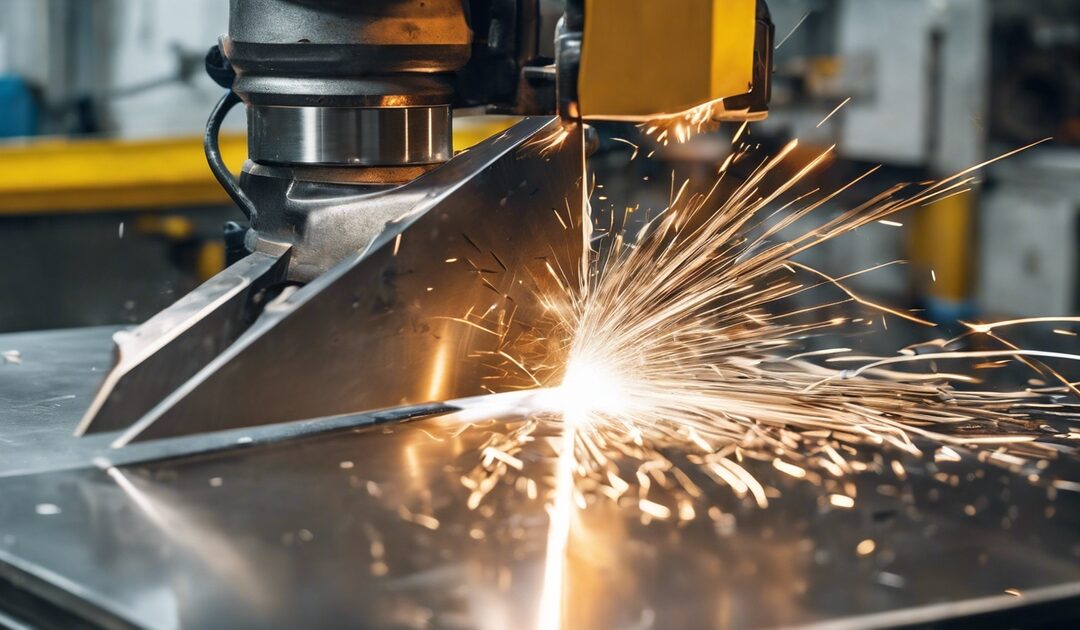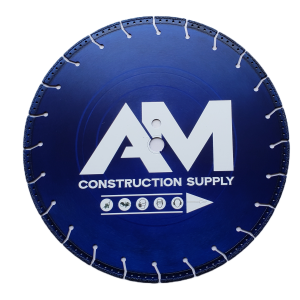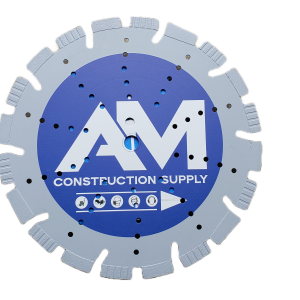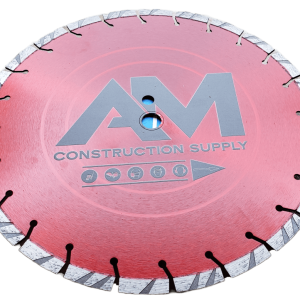Diamond blade cutting metal isn’t just a modern innovation; it’s a technique that has evolved over decades, revolutionizing how we approach metalwork. The unique properties of diamond blades make them unparalleled in precision and efficiency, slicing through metal with ease and finesse that traditional metal cutting methods can’t match. This post dives into the heart of diamond blade technology, exploring its impact on the industry and why it’s become the go-to choice for professionals seeking clean, precise cuts. From their historical roots to the cutting-edge advancements that have made them more accessible and effective than ever, we’ll uncover the reasons behind their enduring popularity and how they continue to shape the future of metalworking.
Key Takeaways
- Diamond blades are highly effective for cutting metal, offering precision and speed due to their hard-wearing properties.
- Choosing the right diamond blade for your metal cutting project is crucial; factors to consider include the type of metal, thickness, and desired cut quality.
- Proper use and maintenance of diamond blades can significantly extend their lifespan, ensuring cost-effectiveness and consistent performance.
- Safety should always be a top priority when using diamond blades for cutting metal; wearing appropriate protective gear and following manufacturer guidelines is essential.
- Investing in quality diamond blades can lead to better outcomes for your projects, with fewer blade changes and more precise cuts.
- By understanding how diamond blades work and selecting the appropriate type, users can maximize efficiency and achieve better results in their metal cutting tasks.
Diamond Blades Overview
Cutting Efficiency
Diamond blades stand out for their superior cutting speed compared to traditional metal or abrasive blades. They use a friction-based mechanism to cut, resulting in smoother and faster cuts. The sharpness of diamond blades significantly reduces work time for metal projects. This efficiency is a game-changer for professionals and hobbyists alike.
The friction that diamond blades generate allows them to slice through metal with ease. This not only speeds up the process but also ensures a cleaner cut. The reduced work time is a major advantage, especially in professional settings where time equals money.
Durability Factors
The longevity of diamond blades depends on several factors. These include the materials they’re cutting and the conditions under which they’re used. It’s crucial to choose a blade with the right bond hardness for cutting metal. This ensures it can withstand the demands of the task without wearing down too quickly.
Proper maintenance also plays a key role in extending a diamond blade’s life. Regular cleaning and checks can prevent premature wear and tear. By understanding these durability factors, users can get the most out of their investment in diamond blades.
Size Selection
For optimal performance, it’s essential to match the diamond blade size with the saw’s specifications. Using the wrong size blade can lead to decreased cutting efficiency and pose safety risks. It’s important to follow guidelines for selecting the correct blade size for specific metal cutting projects.
Choosing the right size ensures that the blade operates efficiently and safely. This selection process prevents potential issues that could arise from mismatched components.
Safety Measures
When using diamond blades for cutting metal, wearing appropriate personal protective equipment (PPE) is crucial. Following manufacturer’s safety instructions helps prevent accidents during use. Users should be aware of common mistakes that could compromise safety.
Safety measures include wearing gloves, goggles, and other protective gear. Avoiding these common mistakes ensures a safer working environment when handling diamond blades.
Advantages of Diamond Blades
Precision Cutting
Diamond blades stand out for their superior precision in cutting metal. Unlike conventional blades, the thickness and diamond grit size on these blades can be finely tuned. This customization allows for cleaner cuts with minimal material loss. The thinner the blade, the less material it removes during a cut, which is crucial for precise metalworking tasks.
To maintain this precision, operators must use the correct blade speed and feed rate. These factors prevent blade warping and ensure consistent cuts from start to finish. Regular checks and adjustments keep the cutting process smooth, ensuring each piece of metal meets exact specifications.
Versatility in Metal
Diamond blades are not limited to cutting just one type of metal. They can handle everything from aluminum to hardened steel. This versatility comes from specialized diamond blades designed for specific metals. However, there are also universal diamond blades suitable for various projects involving multiple types of metals.
Choosing the right blade enhances cutting performance significantly. For instance, a blade optimized for stainless steel will cut through it more efficiently than a general-purpose blade. This optimization ensures faster completion times and reduces the need for multiple tools on a project.
Longevity and Wear
High-quality diamond blades significantly outlast their lower-quality counterparts in metal cutting applications. Their longevity is due to the diamonds’ hardness and the blade’s design, which distributes wear evenly across its surface.
Factors contributing to wear include the type of metal being cut and the cutting speed. Harder metals and faster speeds increase wear but choosing a blade suited to the task can mitigate this effect.
To maximize blade life, proper use and maintenance are key. Operators should regularly check for signs of wear or damage and follow manufacturer guidelines for care. This might include cleaning the blade after use or using specific coolants during cutting to reduce heat buildup.
Understanding Metal Cutting
Cutting Metal Basics
Diamond blades are a powerful tool for cutting metal, but understanding their mechanism is crucial. These blades cut through metal by grinding away the material rather than slicing it. This process generates heat, requiring the blade to have a cooling mechanism, often through water or air.
There are specific diamond blades designed for metal cutting. These blades have a hard bond and diamond grit embedded in the edge. The hardness of the bond ensures that the blade can withstand the abrasive nature of metal cutting.
Before starting a metal cutting project, it’s essential to select the right diamond blade. Considerations include the type of metal, thickness, and desired cut quality. Preparing your workspace and ensuring safety measures are in place is also critical.
Steel Cutting Capability
For cutting steel, hard-bonded diamond blades are preferred. Their durability allows them to cut through tough steel without wearing down quickly. However, not all steel types are suitable for diamond blade cutting. High-carbon steels can wear down even hard-bonded blades faster due to their density and hardness.
There are limitations to what diamond blades can do with steel. For instance, very thick or hardened steels may require alternative cutting methods like plasma or oxy-fuel cutting.
e diamond blade models stand out for their effectiveness in steel cutting. The MK Diamond BX-10 and Husqvarna VH5 are known for their robustness and longevity when cutting various steel types.
How Diamond Blades Work
Cutting Mechanism
Diamond blades stand out in the metal cutting industry for their unique approach. Unlike traditional blades that slice through materials, diamond blades grind through metal. This process involves tiny diamond crystals embedded in the blade’s edge acting as the cutting teeth.
The effectiveness of a diamond blade largely depends on two factors: the diamond grit and the bonding material. The grit size of the diamonds determines how finely the blade can cut, while the bonding material holds these diamonds in place. As the blade spins, these diamonds grind against the metal, slowly wearing it away.
Speed and pressure play crucial roles in this mechanism. A higher blade speed increases the cutting efficiency, but only up to a point where it remains safe and doesn’t overheat. Similarly, applying the right amount of pressure is vital. Too little pressure makes the cutting process inefficient, while too much pressure can damage both the blade and the metal being cut.
Material Removal
The removal of metal during cutting is achieved through an abrasive action unique to diamond blades. This action allows for efficient and precise material removal, making diamond blades highly sought after for complex metalwork projects.
Compared to other types of cutting blades, diamond blades offer superior speed and precision in material removal. They can quickly grind through tough metals without losing their edge, thanks to the hard-wearing nature of diamonds. This contrasts sharply with traditional blades that might dull quickly or struggle with certain metals.
In terms of efficiency, diamond blades reduce waste and improve accuracy. Their ability to cut cleanly without producing large burrs or rough edges means less finishing work is required afterward. This advantage not only saves time but also materials, as there’s minimal loss from inaccurate cuts or excessive grinding.
Selecting the Right Blade
Blade Size Guide
Choosing the right size for a diamond blade is crucial when cutting metal. The thickness and type of metal dictate the appropriate blade size. For thin metals, smaller blades ensure precision without wasting material. Conversely, thick metals require larger blades to cut through efficiently.
Using a blade that’s too small can lead to excessive wear and potential breakage. A too-large blade makes it hard to control the cut, risking damage to both the metal and the blade. It’s essential to match blade size with metal thickness for optimal performance.
Tips for adjusting your technique include slowing down the cut speed with thicker metals and applying less pressure with thinner ones. This approach maximizes both safety and efficiency.
Matching Blade to Metal
Understanding the properties of both the diamond blade and the metal is key to achieving a clean cut. The bond hardness of a diamond blade should complement the material it’s cutting. Harder materials require a softer bonded blade to allow new diamonds to be exposed as needed. Softer materials work best with harder bonded blades for longevity.
Grit size also plays a role in matching blade to metal. Finer grits are better for harder metals, offering a smoother cut. Coarser grits suit softer metals by removing material more quickly without clogging.
For example, cutting stainless steel demands a different approach than slicing through aluminum or copper. Stainless steel pairs well with fine-grit, soft-bonded blades, while aluminum benefits from coarser grits and harder bonds.
Understanding these pairings leads to efficient and precise cuts, prolonging your diamond blade’s life and ensuring high-quality workmanship.
Maximizing Blade Life
Usage Tips
To get the most out of your diamond blades when cutting metal, optimal speed and pressure are key. Running the blade too fast can wear it down quickly, while too slow a speed might not cut effectively. Finding that sweet spot ensures efficiency and prolongs the blade’s life.
Regular inspections of your diamond blade are crucial. They ensure both safety and performance are up to par. Look for any visible damage or wear before each use. This practice prevents unexpected breakdowns during critical cutting tasks.
Preventing overheating is another important aspect. During extended use, blades can get hot, which may lead to warping or damage. Techniques like periodic cooling breaks and using water as a coolant can keep the temperature down. This not only protects the blade but also ensures a cleaner cut.
Maintenance Routine
Setting up a routine maintenance schedule is vital for extending the lifespan of your diamond blades used in metal cutting. After each use, cleaning the blade removes any metal debris that could corrode or clog it over time.
Proper storage is just as important as cleaning. Storing blades in a dry, cool place prevents moisture-related damage and keeps them ready for their next use.
Regularly check your diamond blades for signs of wear such as uneven segments or missing diamonds. These indicators tell you it’s time for a replacement. Ignoring these signs can lead to poor performance or even accidents.
Safety First
Essential Gear
When cutting metal with diamond blades, proper safety gear is non-negotiable. The essential items include safety goggles, heavy-duty gloves, ear protection, and a dust mask or respirator. Each piece plays a critical role in protecting against flying debris, loud noise, and harmful dust. Safety goggles shield the eyes from metal shards that can cause severe injury. Gloves protect the hands from cuts and burns while handling sharp metal edges. Ear protection preserves hearing in the high-decibel environment of cutting operations. A dust mask or respirator guards against inhaling fine metal particles that can damage respiratory health.
The fit and condition of this gear are equally important. Ill-fitting protective equipment can compromise safety and effectiveness. Regular inspections ensure gear remains in top condition, ready to offer maximum protection.
Manufacturer Guidelines
Adhering to manufacturer’s guidelines ensures not only personal safety but also optimal performance and longevity of the diamond blade. These guidelines typically cover proper installation, operation speeds, and maintenance procedures. For instance, operating a blade beyond its recommended speed can result in overheating and potential breakage, posing serious risks.
Manufacturers often recommend specific cooling methods like wet cutting to prevent overheating. They also provide storage instructions to maintain the blade’s integrity over time. Ignoring these recommendations can lead to premature wear or even catastrophic failure during use.
Safe Cutting Practices
Proper saw handling and correct blade positioning are pivotal for safe cutting practices. Ensuring the material being cut is securely clamped down avoids unexpected movements that could lead to accidents. It’s crucial to let the diamond blade work at its own pace through the metal without forcing it; this prevents blade warping or breaking.
Risks associated with improper cutting techniques include kickback, where the saw might jerk back towards the operator unexpectedly, and blade shattering due to excessive pressure or heat build-up. To avoid these dangers, always follow best practices such as checking for blade alignment before each cut and using steady, controlled motions during cutting.
Why Choose Quality Diamond Blades
Superior Performance
Quality diamond blades stand out for their superior performance in cutting metal. These blades incorporate advanced materials and technology, making them exceptionally durable and efficient. The use of high-grade diamonds in the blade’s edge significantly enhances its cutting ability. This results in faster, cleaner cuts with minimal effort.
Advancements in diamond blade technology have pushed the boundaries of what’s possible in metal cutting. Modern blades are designed for precision and speed, tackling even the most demanding tasks with ease. For professionals and DIY enthusiasts alike, investing in high-quality diamond blades means achieving better results, faster.
Enhanced Safety Features
Modern diamond blades come equipped with a range of safety features. These include vibration reduction, noise dampening, and heat dispersion technologies. Such features not only make cutting smoother but also significantly safer.
The importance of these safety enhancements cannot be overstated. They contribute to a safer working environment by minimizing risks associated with metal cutting tasks. Proper maintenance ensures these features continue to provide protection over time. Following the “Safety First” principle from the previous section, it’s clear that quality diamond blades are a wise choice for anyone prioritizing safety.
Cost-Effectiveness
While quality diamond blades might seem expensive upfront, they prove to be cost-effective in the long run. Their durability means they last longer than standard blades, reducing the need for frequent replacements. This longevity, combined with their superior performance, translates into savings on both time and resources.
The initial investment pays off through enhanced efficiency and reduced downtime. In scenarios where precision and reliability are paramount—such as large construction projects or intricate metalwork—diamond blades can significantly cut down on labor costs and material wastage.
Making the Right Choice
Assessing Your Needs
To select the right diamond blade for cutting metal, assess your needs carefully. First, consider the type of metal you’ll be cutting. Different metals require different blades for optimal performance. For instance, a blade that cuts through steel effortlessly might struggle with aluminum.
Next, think about the frequency of your cutting tasks. If you’re cutting metal regularly, invest in a higher-quality blade that can withstand repeated use. This not only ensures efficiency but also safety and longevity.
Here’s a quick checklist to help evaluate blade features against your project requirements:
- Blade material compatibility with your metal type.
- Size and thickness of the blade for precision.
- Durability for frequent use.
- Speed and ease of cutting.
By considering these factors, you can narrow down your options and find a diamond blade that meets your specific needs.
Consulting Experts
Before making a purchase, consulting with diamond blade experts is invaluable. They can provide insights into which blades perform best for various metals and tasks. This advice is crucial because it helps avoid costly mistakes and ensures you get the right tool for the job.
Experts can also introduce you to the latest technologies in diamond blades that could enhance your work efficiency. Many reputable manufacturers offer consultations to guide customers toward the best choices for their projects.
To find credible experts and manufacturers, start by researching companies with positive reviews and a strong presence in the industry. Trade shows and online forums like Schluterville are also great resources for connecting with professionals who have deep knowledge of diamond blades.
Final Remarks
Diamond blades represent a pinnacle of cutting technology, especially for tackling tough metal cutting jobs. Your journey from understanding the basics of diamond blades to selecting the right one and ensuring its longevity underscores the importance of quality and safety in achieving optimal results. Quality diamond blades not only offer superior performance but also ensure safety and efficiency, making them an indispensable tool for your metal cutting needs.
Now’s the time to make that smart choice. Opt for a high-quality diamond blade that meets your specific metal cutting requirements. Remember, investing in the right tool not only enhances your work quality but also contributes to your project’s success. Don’t settle for less; choose wisely and let your next cut be as flawless as a diamond itself.
Frequently Asked Questions
Can diamond blades cut through metal?
Yes, diamond blades are capable of cutting through metal when designed specifically for that purpose. Their unique composition allows efficient and precise cuts in various metals.
What are the advantages of using diamond blades for metal cutting?
Diamond blades offer superior durability, faster cutting speed, and a cleaner finish compared to standard cutting tools. This efficiency saves both time and resources.
How do I know which diamond blade to select for cutting metal?
Selecting the right blade depends on the type of metal you’re cutting and the desired cut quality. Look for blades labeled for use with metal and consider the blade’s thickness and diameter.
How can I maximize the life of my diamond blade when cutting metal?
To maximize blade life, ensure proper cooling during cuts, maintain correct cutting speed, and follow manufacturer recommendations for material compatibility.
Why should I invest in quality diamond blades instead of cheaper alternatives?
Quality diamond blades provide better performance, longer lifespan, and ultimately save money by reducing replacement frequency. They also ensure safety by minimizing blade failure risks during operation.
Is it safe to use diamond blades for metal cutting?
Yes, but safety precautions are essential. Always wear protective gear, ensure your equipment is in good condition, and follow the manufacturer’s guidelines to prevent accidents.
